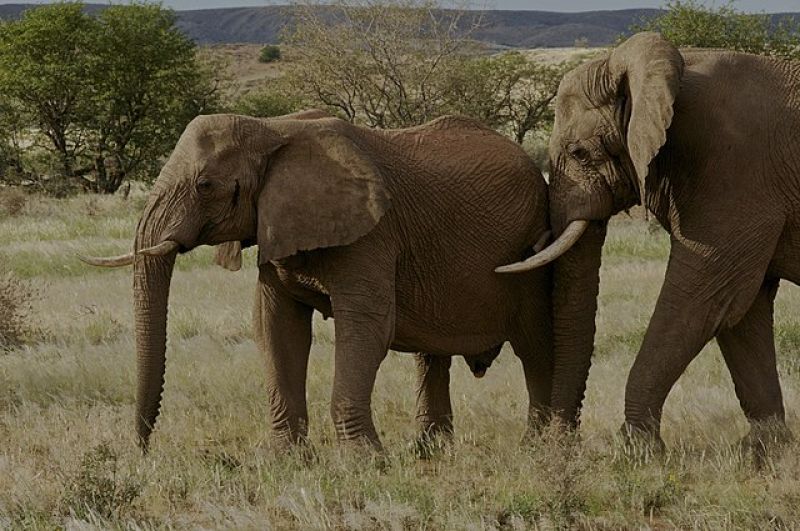- Chuadanga logs season’s highest temperature for 4th consecutive day |
- 20 Syrian pro-govt forces killed in two IS attacks: monitor |
- Google fires 28 workers protesting contract with Israel |
- US vetoes widely backed resolution on Palestine as UN member |
- Dhaka’s air quality remains ‘unhealthy’ Friday morning |
Vegetation declining on elephants’ migration routes in Namibia

African elephant
A study based on extensive remote sensing data indicates that vegetation near the migration routes of elephants in Namibia has decreased. Human habitation and fences as well as artificial obstacles of other kinds affect the movements of wild animals, helping to accelerate the decline in vegetation. Meanwhile, increases in plant life were observed in areas where intensive farming and cattle grazing were practised.
Researchers at the University of Eastern Finland and the University of Namibia used diverse remote sensing data to ascertain how elephants and other large herbivorous mammals affect vegetation and its structure in the Zambezi area in Namibia in 2002–2021. The study also evaluated the effects of human activity on vegetation and the movements of wild animals. The study was published in the scientific journal Sensor.
About 12,000 elephants now live in the Zambezi area. The number has increased nearly tenfold since 1989 when the size of the elephant population was less than 1,500 individuals. The study showed that the reduction of vegetation was greatest in areas with large elephant populations. Vegetation was affected most in the elephants’ migration corridors in national parks and nature reserves.
“A deeper understanding of how wild animals affect the vegetation offers tools for improving the management of wild animals and natural resources,” says Professor Alfred Colpaert of the University of Eastern Finland.
Among other things, the study utilised MOJDIS satellite data, which is applicable for the examination of changes in the soil over a long period of time. More advanced geospatial methods were used in the analysis the time series materials which made it possible to distinguish between the degeneration of soil caused by human action and that which is caused by natural climatic factors.- Press release
https://news.cision.com/university-of-eastern-finland/r/vegetation-declining-on-elephants--migration-routes-in-namibia,c3591795

